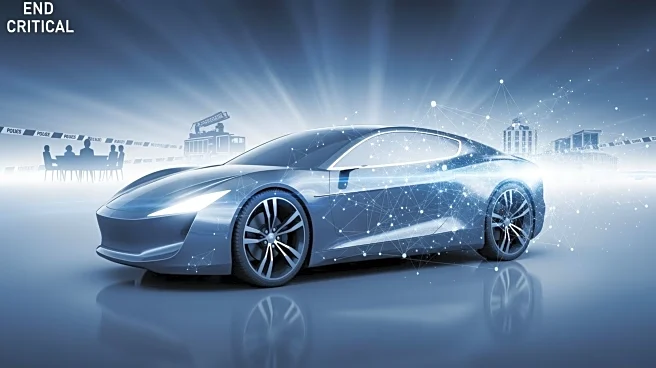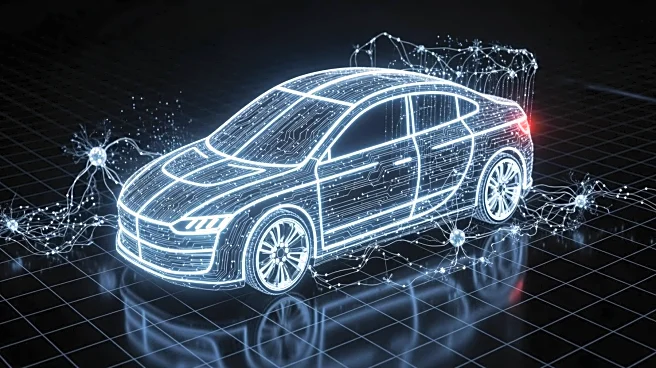What's Happening?
A new study published in Nature details the development of a transformer-based vehicle re-identification model, TVRVI, which utilizes view information to improve accuracy. The model was tested on several
datasets, including VeRi-776, VRAI, VERI-Wild, and VehicleID, demonstrating its ability to handle complex view variations. TVRVI employs a dual-branch architecture, separating global and local view features, and uses a view parsing network to assign hard view labels. This approach reduces feature entanglement and enhances the model's generalization capabilities. The study highlights the model's superior performance compared to existing methods, particularly in challenging scenarios with large view variations, such as aerial datasets.
Why It's Important?
The development of the TVRVI model marks a significant advancement in the field of vehicle re-identification, a crucial component of intelligent transportation systems and urban surveillance. By effectively utilizing view information, the model addresses challenges posed by varying perspectives and enhances identification accuracy. This improvement is vital for applications such as traffic monitoring, law enforcement, and autonomous vehicle navigation, where precise vehicle identification is essential. The model's ability to generalize across different datasets suggests potential for widespread adoption, offering a robust solution to improve safety and efficiency in urban environments.
What's Next?
The success of the TVRVI model may lead to further research and development in transformer-based approaches for vehicle re-identification. As urban areas increasingly rely on surveillance and intelligent transportation systems, the demand for accurate and efficient identification models is likely to grow. Future studies may focus on refining the model's architecture, exploring additional datasets, and integrating the technology into real-world applications. Collaboration between academic institutions and industry stakeholders could accelerate the deployment of such models, enhancing urban mobility and security.











